Survival & Reclamation
To speak of witchcraft is to step into a river that runs far older than the names we now give it. Before it was “witchcraft,” before the word was feared or outlawed, there were hands in the soil, voices in the wind, charms whispered over bread and water. There were offerings to unseen powers — not as an abstract theology but as part of the rhythm of living. In the earliest human societies, magic and religion were not separate spheres; they were the same weave, an unbroken conversation between people and the forces of the world.
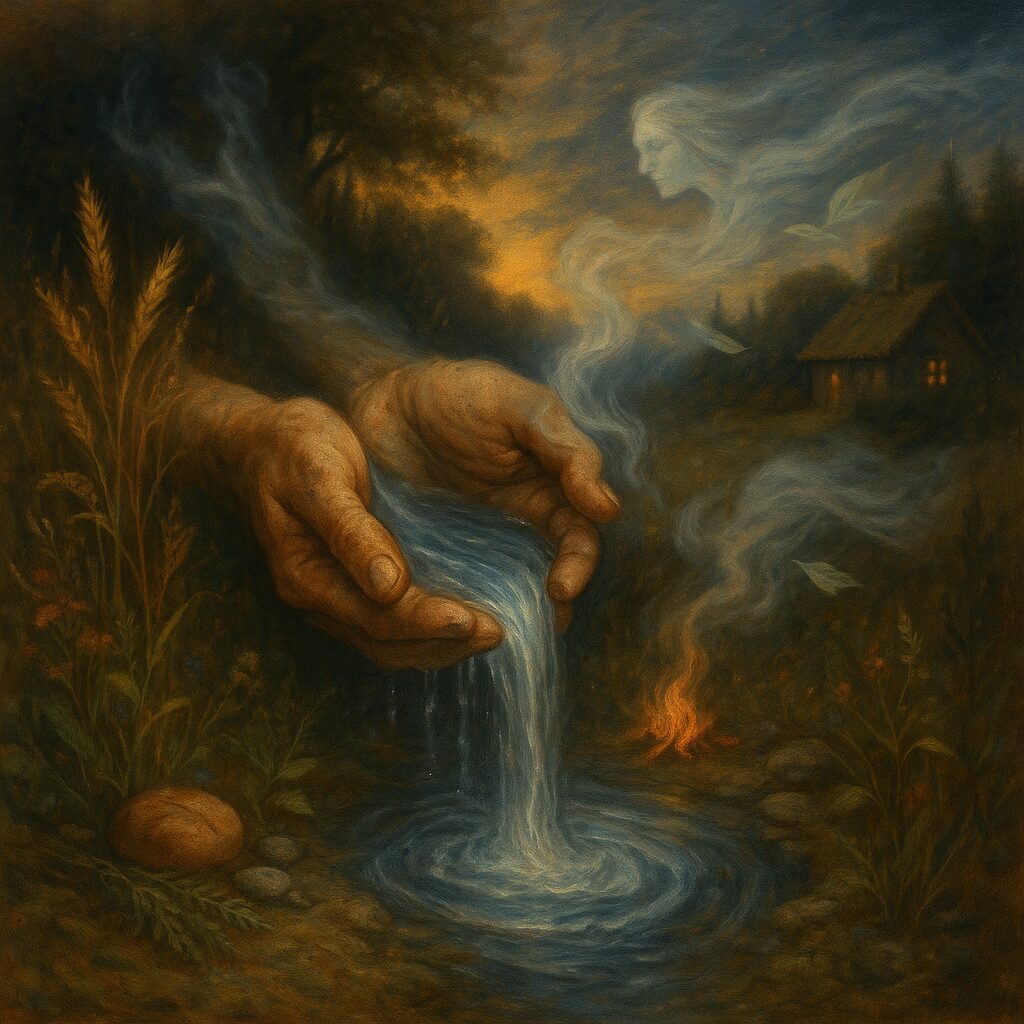
Archaeological traces of amulets, carved figurines, painted caves, and seasonal ritual sites point to a deep lineage of magical practice. These were acts not of superstition but of survival — rites to ensure the hunt, to guard the newborn, to honor the ancestors and the seasons’ turn. Many of these customs evolved into the folk practices that would survive for centuries, especially in rural Europe, where pre-Christian beliefs intertwined with the new faith brought by missionaries. The gods became saints, the old festivals were dressed in new names, but the underlying logic — that the land was alive, that relationships with it mattered — endured.
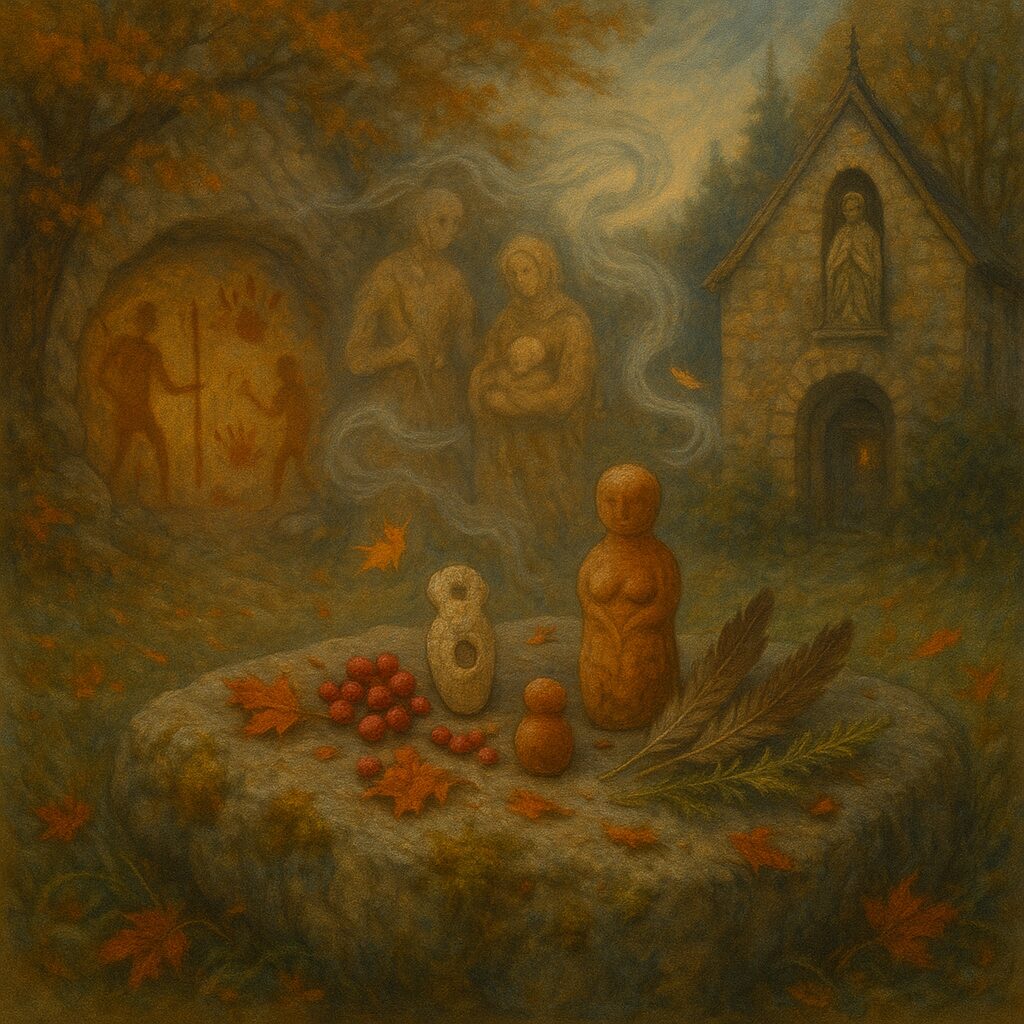
It is here, in these remnants of ancient pagan and animist practice, that witchcraft’s roots lie. The cunning woman gathering herbs for healing, the wise man marking the sky’s omens, the midwife tending both birth and death — these figures were heirs to a body of knowledge passed orally, adapted to each generation. Much of it was not “witchcraft” in any pejorative sense, but part of the normal work of life in village and field.
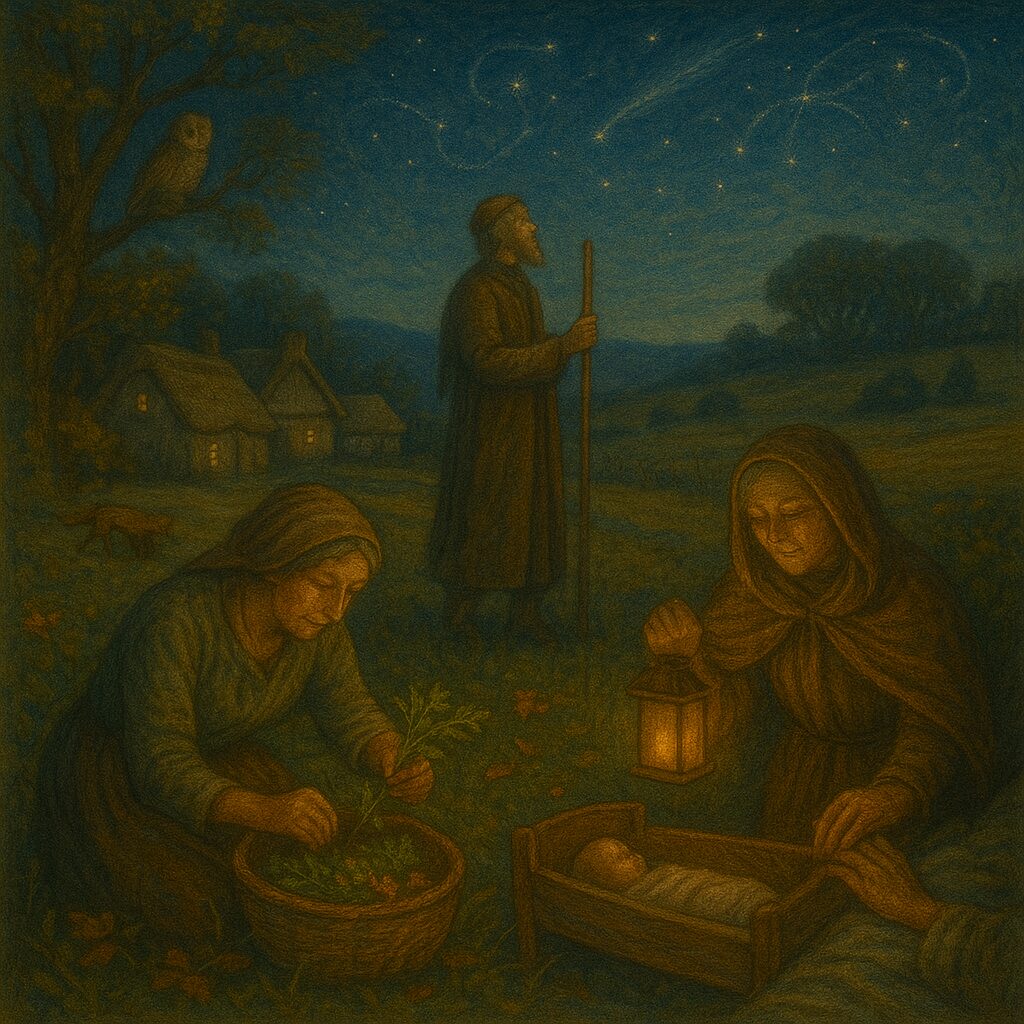
The rupture came with the rise of centralized religious and political authority, especially in medieval and early modern Europe. Here the witch was reimagined not as neighbor or healer but as a threat to be rooted out. The publication of Malleus Maleficarum (The Hammer of Witches) in 1487 marked a turning point. Ostensibly a legal and theological manual for identifying and prosecuting witches, it was in truth one of the most effective pieces of propaganda ever written. Its lurid descriptions and sweeping accusations blurred rumor with doctrine, encouraging suspicion where none had existed. In the centuries that followed, tens of thousands — mostly women, but also men and children — were tried, tortured, and executed under charges of witchcraft.
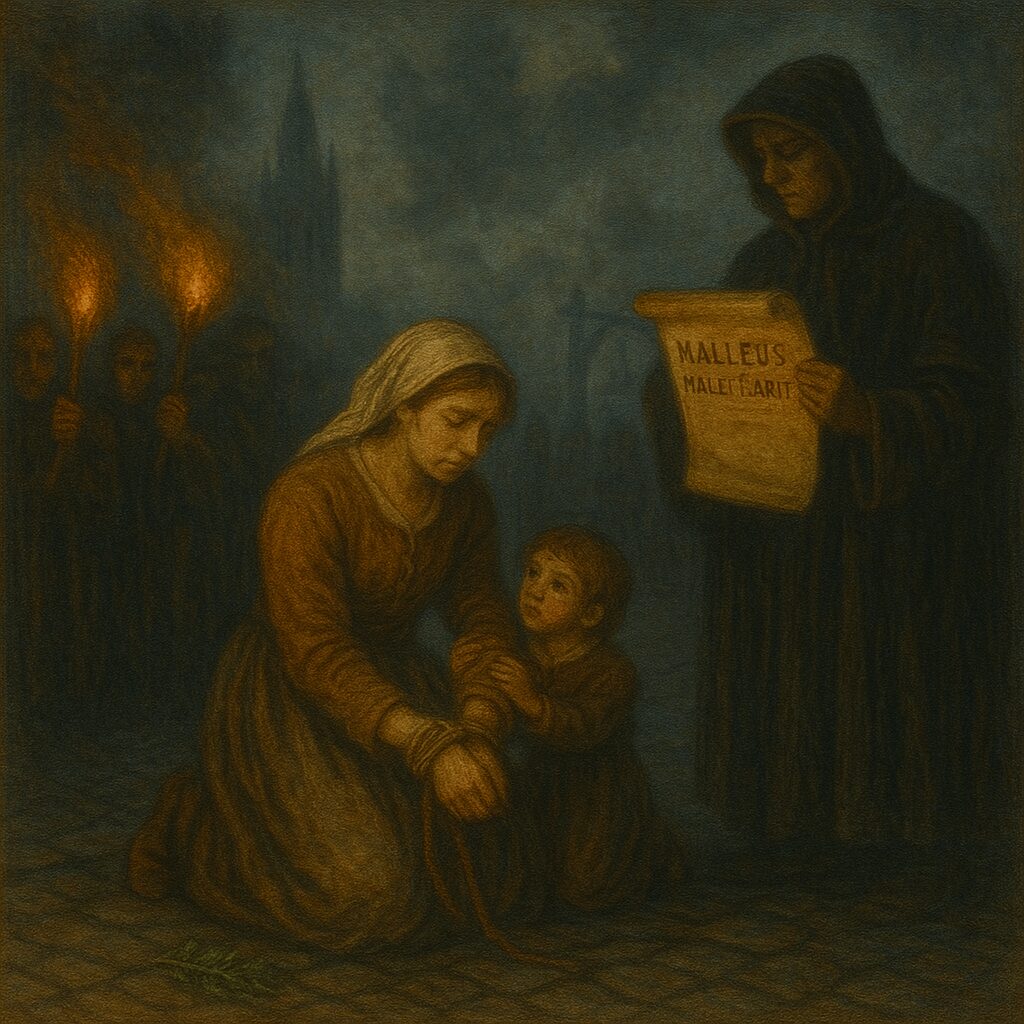
And yet, despite this machinery of fear, certain threads of knowledge persisted. Not every herbal charm or moonlit prayer was forgotten. Old women who remembered the uses of plants, male magicians who studied astrological tables, shepherds who muttered over their flocks — they carried forward fragments of a much older heritage, sometimes without knowing its origin. Even when practices were misunderstood, misquoted, or reframed to fit new beliefs, they sparked discoveries and sustained lines of magical thought. A misunderstood ritual could lead to an innovation; a misremembered spell could open new pathways of meaning.
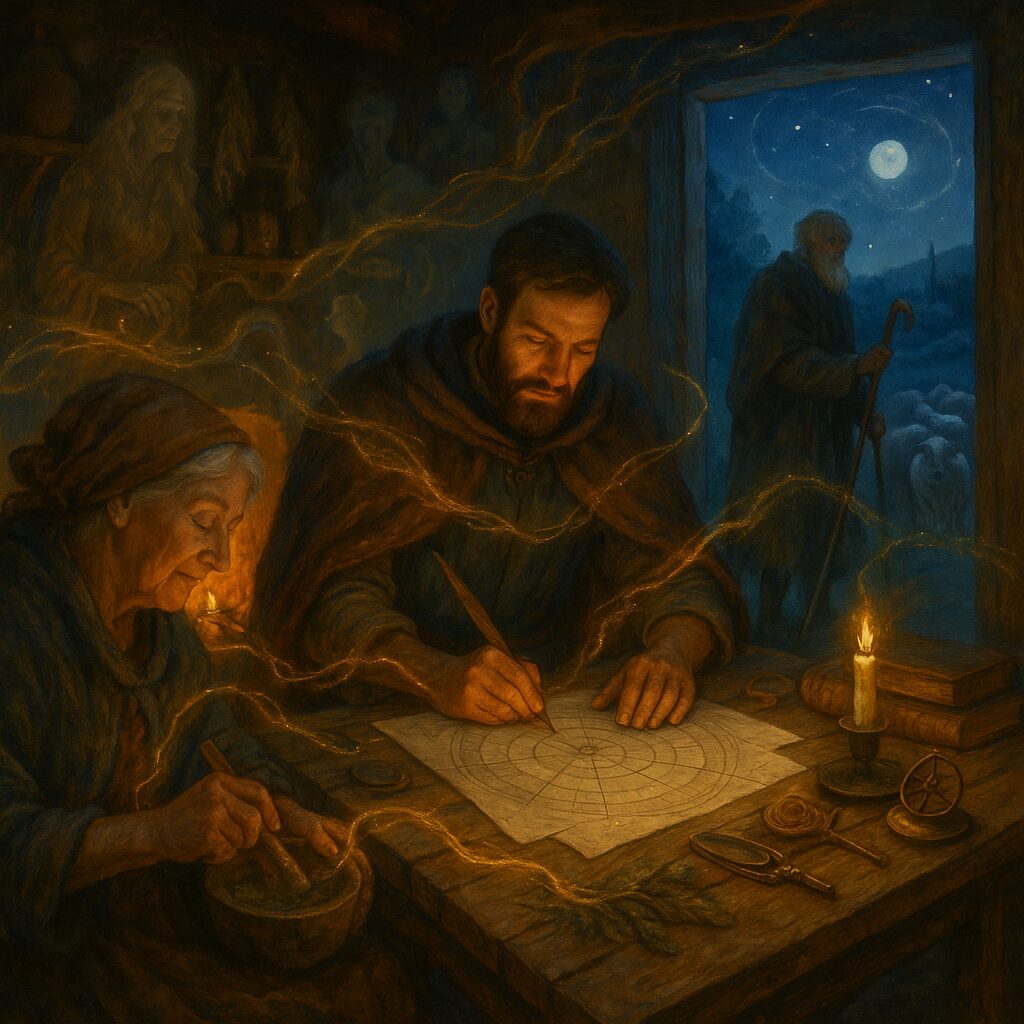
By the 18th and 19th centuries, the witch had receded somewhat from the courts but lived on in folklore — as both bogeyman and folk hero. Romantic and nationalist movements sometimes reclaimed her as a symbol of local heritage, while occult revivals such as ceremonial magic absorbed certain folk elements into their own elaborate systems. The Victorian fascination with spiritualism, Theosophy, and esoteric societies laid groundwork for a modern reimagining of the witch: not simply as a figure from the past, but as a practitioner of a living, evolving craft.
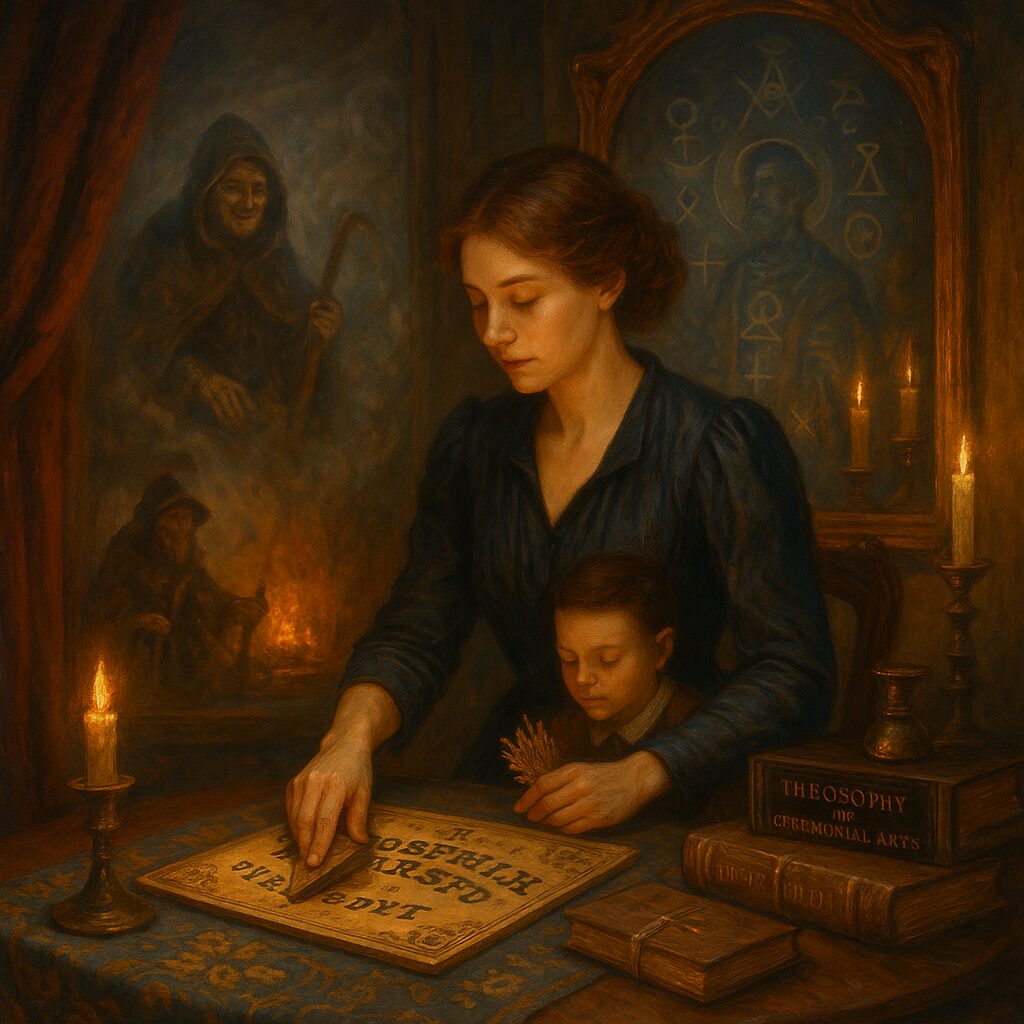
In the mid-20th century, Gerald Gardner and others in Britain brought forth what would become Wicca, framing it as the survival — however reconstructed — of an old pagan religion. Wicca codified ritual structures, seasonal festivals, and ethical guidelines such as the Wiccan Rede: An it harm none, do what ye will. This was a striking departure from centuries of association between witchcraft and malice. It asserted not only that witches could be ethical, but that their ethics were self-defined and rooted in personal responsibility. The Rede, while never universally accepted, became a touchstone for many who sought a moral compass in magical work.

Yet Wicca was only one flowering from a much larger root. Folk magic continued, often separate from formal initiation or ceremonial systems. The counterculture of the 1960s and 70s embraced witchcraft as a banner for personal freedom, feminism, queer identity, and environmental activism. Here the witch became a subversive figure again — but this time by choice, reclaiming the very word once used to condemn.
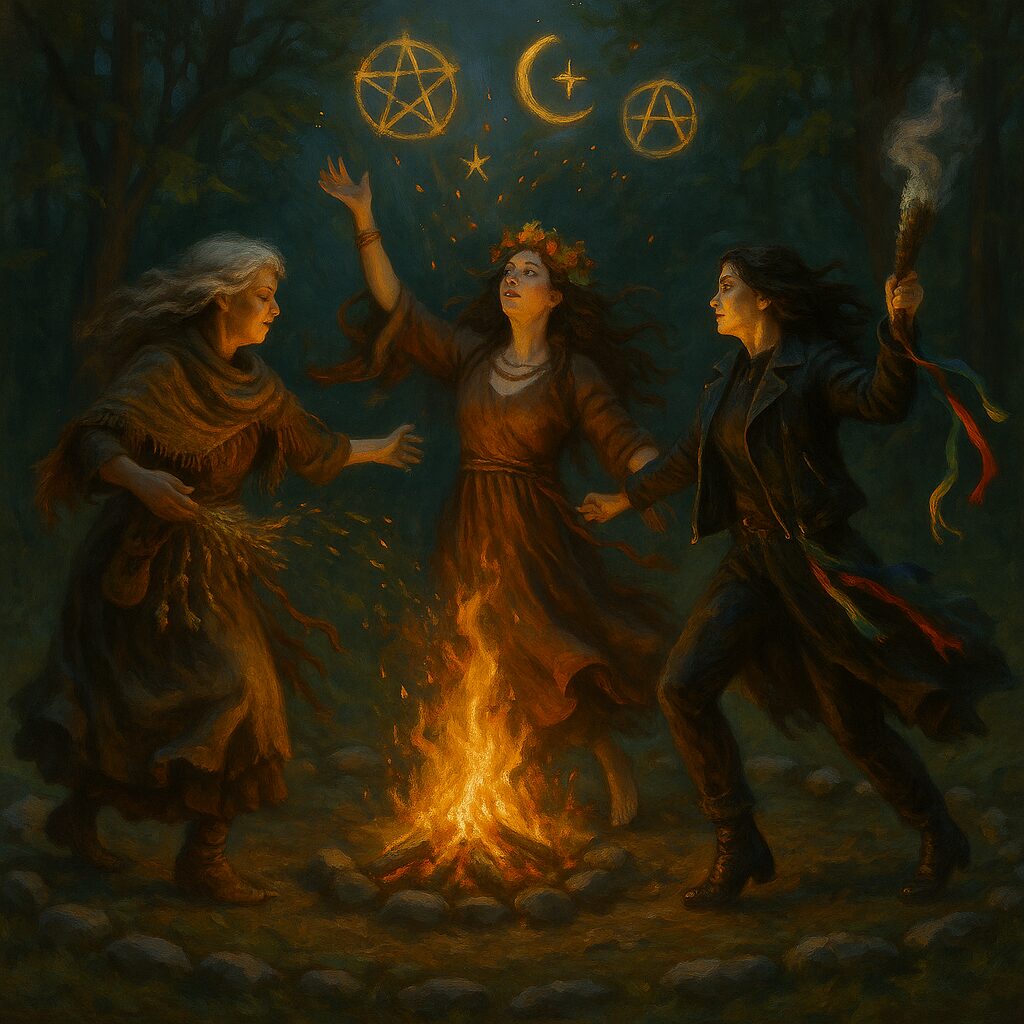
Today, witchcraft is more diverse than ever. It is practiced in covens and in solitude, in urban apartments and forest clearings, in ways that draw from ancestral traditions, personal gnosis, pop culture, or all three. Some witches are deeply polytheistic, working with specific deities; others are animist, spirit-worker, or entirely secular. The craft has been shaped by neopaganism’s earth-based spirituality, by global exchange of magical traditions, and by the digital age’s unprecedented access to information.

And yet, for all its diversity, witchcraft retains certain through-lines. It begins with relationship — to the land, to the seen and unseen, to cycles of life and death. It values knowledge, whether inherited, discovered, or created anew. It recognizes that power flows in many directions, not only from thrones or pulpits, but from the ground beneath our feet, the air in our lungs, the will in our bones.
This is where ethics enter the conversation. Without a single shared code like the Wiccan Rede, many witches must define their own compass. For some, this means drawing from multiple traditions to shape a balanced set of principles; for others, it means trusting an evolving relationship with spirit allies, ancestors, or the land itself. This freedom demands accountability — to the self, to the spirits invoked, and to the communities touched by the work.
Witchcraft ethics are not abstract. They live in the choice to curse or not, to heal or withhold, to share knowledge or keep it guarded. They live in the awareness that magic is never without consequence, and that “harm none” is easier said than defined. Justice magic may harm those who have harmed others; protective wards may reflect malice back upon its source. The craft demands discernment, not blind adherence to rules — an art of weighing intentions against outcomes in the ever-shifting weave of life.
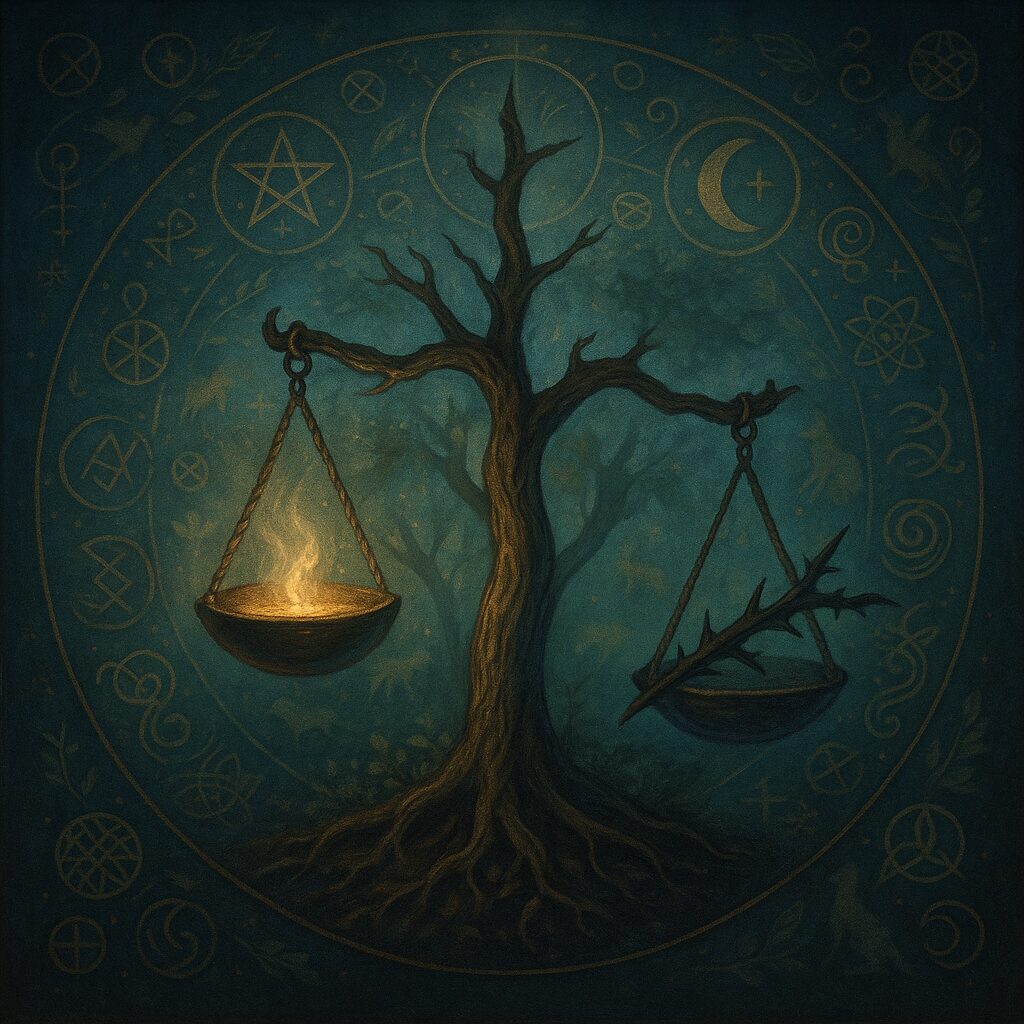
Against this lived reality, popular culture’s portrayals can seem either shallow or strangely potent. Film, television, and literature have perpetuated misconceptions — that all witches are in league with evil forces, that spells are instant shortcuts, that the craft is about spectacle more than substance. But they have also opened space for new imaginings: the witch as feminist hero, as ecological guardian, as queer icon, as seeker of personal sovereignty. These archetypes, while imperfect, invite the public to see witchcraft not only as threat but as possibility.
We would be naïve to ignore the dangers that still linger. In many parts of the world, accusations of witchcraft are not metaphorical; they can lead to exile, violence, or death. The witch hunts of history are not as far behind us as we might wish. Remembering this is part of our ethical inheritance: to honor those who died under the name “witch,” and to stand in solidarity with those who still face persecution today.
And so we arrive at the present moment — a time when the word “witch” can be spoken openly in much of the West, when it can be a personal identity, a political statement, a spiritual calling. But with this freedom comes responsibility. The craft we inherit is not pure; it is a patchwork of survivals, inventions, and reclamations. Its strength lies not in some imagined unbroken lineage, but in its resilience — in the way it has adapted, disguised itself, crossed boundaries, and emerged anew.
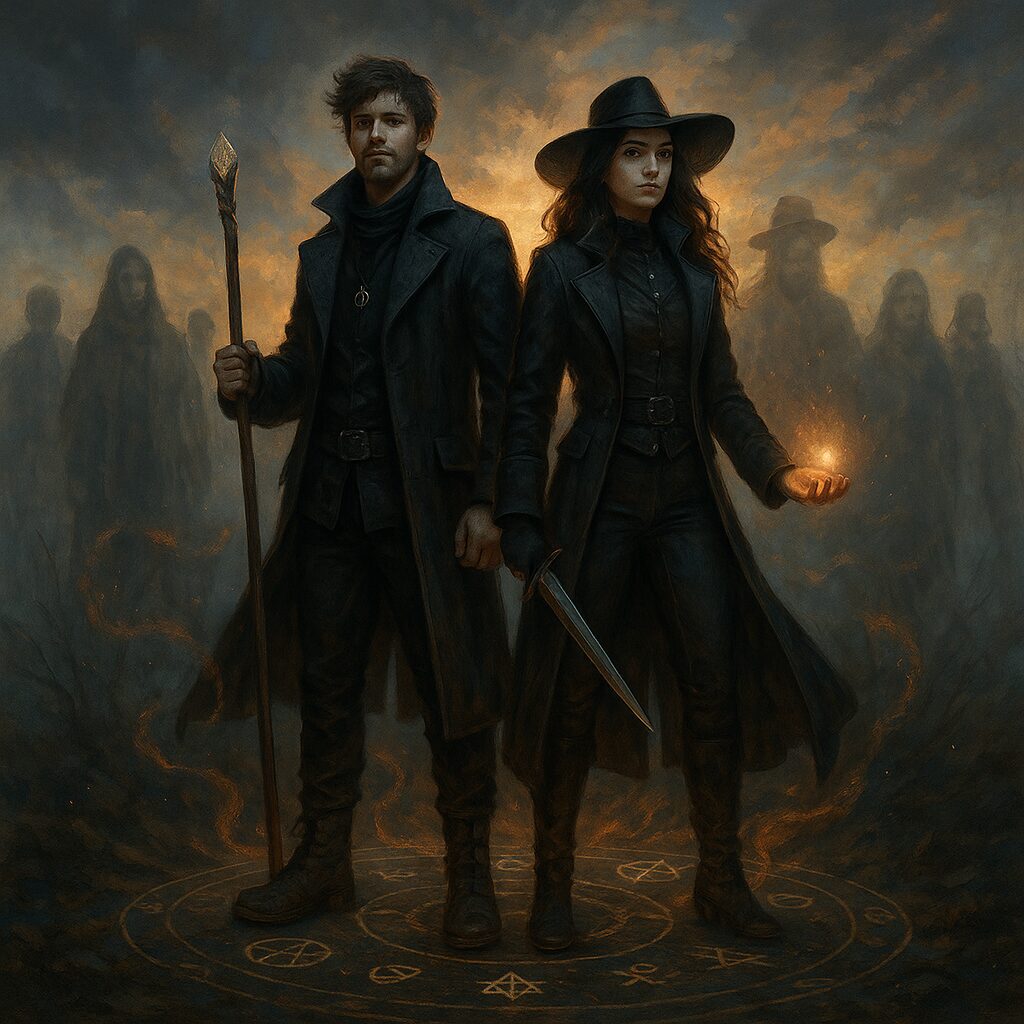
We reclaim the right to speak to the land and to the unseen. We reclaim the power to work with herbs, stones, and symbols without fear of the noose. We reclaim the name “witch” from the mouths that spat it as insult and wear it as a title of honor. And we reclaim, too, the responsibility that comes with it — to work with awareness, to honor our sources, and to remember that every act of magic shapes not only the world but the witch who casts it.
Witchcraft is not a monolith. It is a living, spiraling path that resists final answers. It demands of us both humility and daring. It asks us to remember, to adapt, to create. It is a tradition of survival, of refusal, of shaping ourselves and our reality in mutual transformation. And if we keep faith with that tradition — not as fixed dogma, but as a living conversation with the world — then the witch’s craft will continue to be what it has always been: a way of being in conscious, ethical, and creative relationship with the powers that move through all things.
The work is never finished. And that, too, is part of its power.
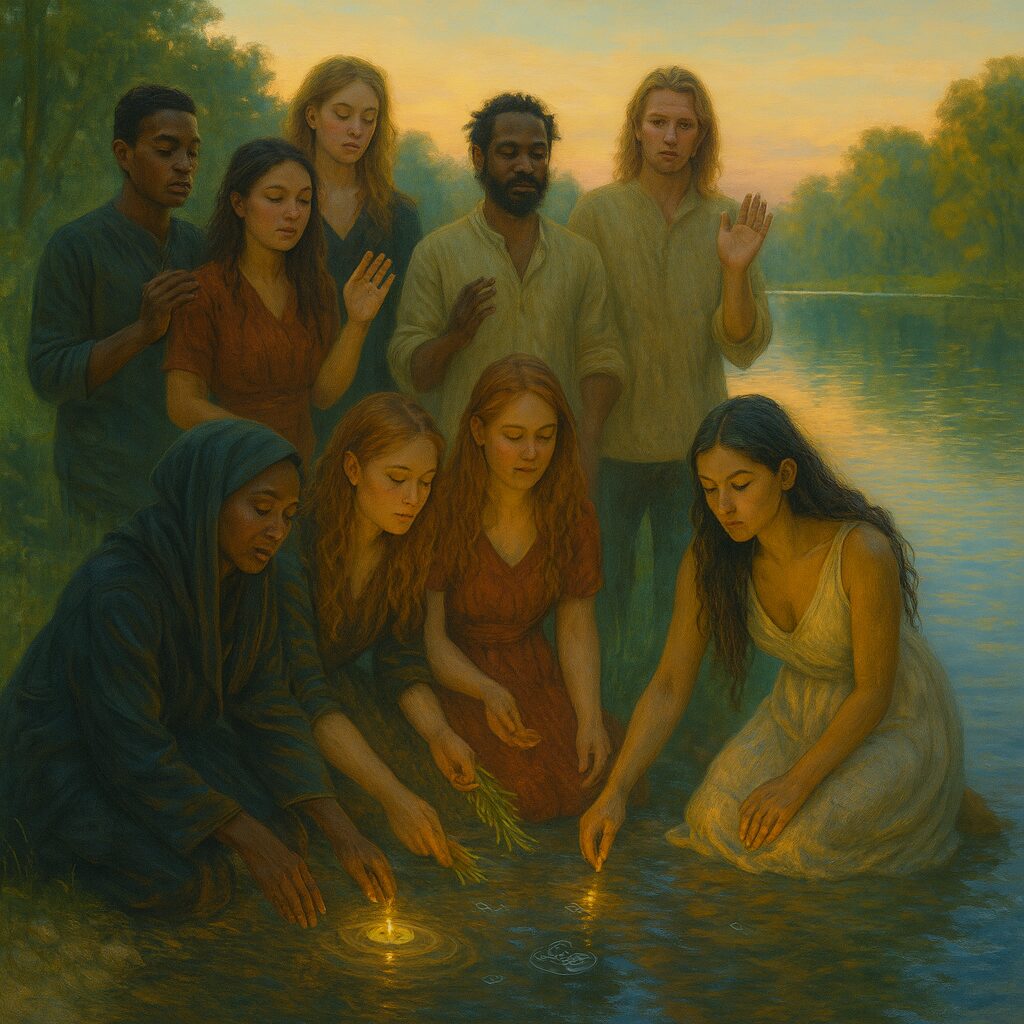
✦ Master Timeline — Witchcraft, Wicca & Influences (Integrated)
Skimmable rows (date • item • note • category). Hekate as the Shadow; Hermes as the Light’s Whisper; a long conversation through time.
What is Witchcraft?c. 12,000–1,000 BCE Prehistory & Proto-Ritual trance, tending, thresholds
-
12,000–6,000
Ritual specialists
Grave goods and cave light hint at healers who spoke with animals and ancestors. The first warders of the fire.
Folklore/Practice -
6,500–3,000
Marks at the threshold
Charmed doorways, blessed wells. Hearths become altars; daily offerings become a grammar of care.
Folklore/Practice -
4,000–2,000
Bonfires and boundary walks
Communities ring themselves in light and song. The year learns its steps.
Folklore/Practice
c. 3000–500 BCE Ancient Near East & Egypt names, bindings, protection
-
c. 2600 BCE
Incantation tablets
Sumerian lines that steady breath and body—spell as medicine, name as remedy.
Text/Work -
2000–1500
Execration rites
Figurines bound and made harmless: an ethic of turning harm aside rather than letting it roam.
Folklore/Practice -
2nd–1st mil.
Household amulets
Eyes and scarabs, gods and vowels—pocket wards for ordinary courage.
Deck/Tool
500 BCE – 300 CE Classical & Hellenistic Worlds crossroads, oracles, star-craft
-
6th–4th c. BCE
Shadow’s whisper manifests as Hekate
Keys and torches at night, dogs at heel, offerings at the three-ways. Guardian of oaths and liminal work. Hekate (bg)
Deity Current -
5th–4th c. BCE
Light’s Whisper emerges as Hermes
Roads and messages; pillar-herms mark crossings; the world’s courier learns witch-speech. Hermes (bg)
Deity Current -
c. 415 BCE
The Mutilation of the Herms
A city panics when its guardians are defaced—proof of how much the crossroads matters.
Trial/Event -
1st–4th c. CE
They meet at the threshold
In the Greek Magical Papyri, Hekate and Hermes are invoked together—shadow and message braided into ritual craft.
Deity Current -
4th–1st c. BCE
Astrology systematized
Planetary dignities and hours give language to timing—the witch’s oldest ally.
Text/Work
300–600 Late Antique & Early Christian theurgy, hermetica, survivals
-
2nd–3rd c.
Hekate and Hermes in theurgy
Chaldean Oracles lift Hekate as cosmic mediator; Hermetic dialogues teach way-finding through spirit.
Deity Current -
506+
Canons against “superstitions”
Edicts scold the folk; doorways still wear quiet charms.
Law
600–1100 Early Medieval Folk Faith saints & wells, night-flight doubted
-
700–900
Blessing hearth and field
Charms for cows and children; prayer stitched to practice—little magics that keep life whole.
Folklore/Practice -
906
Canon Episcopi
Officials call night-flight “illusion,” yet the folk keep dreaming with the wind.
Law
1100–1500 Doctrine & Grimoires crossroads lore, learned magic
-
1200s–1400s
Hekate at the three-ways
Classical “Trivia” remembered; doors still take salt, iron, and whispered thanks.
Deity Current -
1300s–1400s
Hermes Trismegistus
Latin Hermetica circulate: the messenger becomes a teacher of ascent and insight.
Deity Current -
1280–1350
Picatrix & Solomonic cycles
Star-craft marries spirit-craft; talismans learn their hours.
Text/Work
1450–1750 The Witch Hunts panic, policy, harm
-
1428–44
Valais persecutions
Early large-scale killings—fear dressed as law.
Trial/Event -
1542 → 1604
English Witchcraft Acts
Criminalization expands; suspicion weaponized against the poor and the strange.
Law -
1590–91
North Berwick
Storms blamed on witches—politics in a demon’s mask.
Trial/Event -
1692–93
Salem
Spectral “evidence,” real grief. Communities later confess their wrong. Background
Trial/Event -
1735–36
Reframing the statute
From felony to fraud policing; the killing winds ease.
Law
1700–1830 Enlightenment & Folk Survivals cunning craft, powwow
-
1700s
Cunning folk
Healers and finders stand in the gap—practical magic for ordinary lives.
Folklore/Practice -
Late 1700s
Powwow / braucherei
Bible verses braided with signatures and salves: culture as craft. Background
Folklore/Practice
1837–1901 Victorian Currents Spiritualism, occult orders, folklore boom
-
1848
Fox Sisters & the raps
Séances open parlors to the dead—and to women’s authority in the circle.
Trial/Event -
1887–88
Golden Dawn
Ritual frameworks that later witches remix with flair. Background
Movement/Org
1901–1939 Edwardian & Interwar Seeds RWS tarot, theses, modernists
-
1909
Rider–Waite–Smith Tarot
Pamela Colman Smith’s images teach a century to read. Background
Deck/Tool
1940s–1960s Wicca Emerges repeal, covens, voices
-
1944
Helen Duncan’s case
A final spasm of the old statute—proof that fear lingers after truth is known.
Trial/Event -
1951
Witchcraft Act repealed
Space opens for craft to breathe in daylight.
Law -
1954–59
Gardner’s books
Public words for private rites; a lantern raised for seekers. Wicca @ MCC
Text/Work -
1963
Raymond Buckland to U.S.
Gardnerian line established; museum & teaching. Works (Powell’s)
Person -
1964
Alexandrian Wicca (A. & M. Sanders)
A ceremonial-leaning sister to Gardnerian practice.
Movement/Org
1970s Feminist, Ecological & Public Witchcraft Dianic, Reclaiming, visibility
-
1968–70s
Dianic currents
Women’s mysteries step forward; sovereignty named and kept.
Movement/Org -
1979
The Spiral Dance
Ritual meets activism; the circle widens. Works (Powell’s) Practice @ MCC
Text/Work
1980s–1990s Recognition & Community rights, handbooks, festivals
-
c. 1980
Roen & Kael meet
Two paths touch, then decide to walk together.
Person -
c. 1986
Early spellwork & séance practice
Circles of protection, table-tapping patience, notebooks of first results.
Folklore/Practice -
1986
Dettmer v. Landon (United States)
A federal court recognizes Wicca as religion—legal air under our wings.
Law -
1988–93
Scott Cunningham’s guides
A door opened for solitaries—kind, accessible, steady teaching. Works (Powell’s) Works (Powell’s)
Text/Work
2000s Early Internet Witchcraft Witchvox, forums, blogs
-
2005
Cutter v. Wilkinson (United States)
The Religious Land Use and Institutionalized Persons Act protects minority faith practice, including Wicca.
Law -
2007
Pentacle approved for VA headstones
Parity for the fallen—recognition carved in stone.
Law -
2000s
Hermes goes online; Hekate guards the gate
Hermes is routing and message—links, posts, private letters; Hekate is consent, sourcing, and wards at the click-door. Gods @ MCC
Deity Current
2010s–2020s Platforms & Livestream Ritual Witchblr, WitchTok, community care
-
2010s–2020s
The threshold multiplies
Hekate: protection, timing, discernment. Hermes: signal, translation, reach. Best practices root in consent and clarity. Resources @ MCC
Culture/Media -
2023
Coven of the Veiled Moon formalizes
A small coven devoted to service and learning; cadence of shared rites and study. About MCC
Movement/Org -
2024
The coven becomes international
Members across borders—time-zones stitched with candles and cameras.
Movement/Org
2025 Present: MCC cosmology, practice, public archive
-
2025
Coven of the Veiled Moon launches My Cousin’s Coven (MCC)
Hekate and Hermes articulated as guiding currents for the Coven of the Veiled Moon as it launches the public-facing MCC website—keys and torches with roads and messages, meeting at every threshold of practice and pedagogy. About MCC Visit Site
Movement/Org

